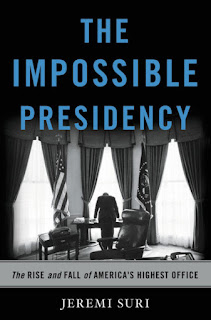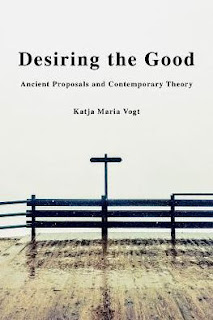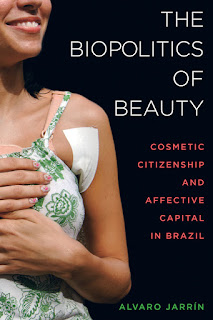Chris D. Thomas is a professor of conservation biology at the University of York, UK. A prolific writer, he has published 210 scientific journal articles, 29 book

chapters, edited one academic book, and has written around 20 magazine and other popular articles since 2000. His works have been cited more than 26,000 times, making him one of the world's most influential ecologists, and his research has been covered on the front pages of the
Guardian and
Washington Post. He was elected a fellow of the Royal Society in 2012, is a long-standing fellow of the Royal Entomological Society, and received Marsh Awards for Climate Change Research in 2011 and for Conservation Biology in 2004 and the prestigious British Ecological Society President's Medal in 2001.
Thomas applied the “
Page 99 Test” to his latest book,
Inheritors of the Earth: How Nature Is Thriving in an Age of Extinction, and reported the following:
Page 99 is a postcard from the Anthropocene. It finds me on the shores of Lake Maggiore, in the foothills of the European Alps. The surrounding forest is unlike any that has previously existed, yet it is still full of species. Humans have hunted and disturbed the forest for thousands of years, exploiting it for food, wood, livestock pens, weapons, warmth, and charcoal to smelt copper, bronze and iron. Then came the Romans, who introduced chestnut and bay trees. Nearly two millennia later, the Industrial Revolution arrived:In 1808, the small lakeside town of Intra became home to Italy’s first steam loom, a picturesque ‘Manchester of Italy’. Industrial wealth meant rich people, and rich people in the nineteenth century craved country villas and gardens. Their enthusiasm for exotic plants to embellish the land became a passion and, to this day, the shores of Lake Maggiore are dotted with plant nurseries and garden centres. A new era had dawned. From a modest start in which humans had deliberately transported a few different kinds of crops, livestock and medicinal plants over thousands of years, the importation of new species had gone into overdrive. The age of European palm forests was about to commence.
So this brings us up to the 20th and 21st centuries, by which time semi-tame birds are gorging themselves on exotic fruits, and mice and squirrels are establishing caches of seeds to see them through the winter; thus transporting seeds out of the gardens and into the forest.
Seedlings sprout along the bases of hedgerows, in the back of every garden border, and under any tree where a defecating or regurgitating bird might sit. A profusion of saplings can be found in the adjacent forest. Wherever wildling palms have grown large enough to produce their own fruits, the under-storey is a veritable jungle of second-generation fronds. A few seeds have been transported half a kilometre [a third of a mile], or even further, from the nearest palm-containing garden, which is about as far as most birds can be expected to fly in one trip. Within a palm generation or two – a human lifetime – virtually all of the warm, forested slopes that line the banks of the lake will be verdant palmeries.
.. the industrial moguls who acted as plant hauliers from the east also brought us global warming, and the severity of winter frosts abated in the region during the second half of the twentieth century. With warmer winters, the [imported evergreen plants from Asia, North America and Australia] gained an advantage. Palms and camphor could now grow more luxuriantly than [native] linden trees. All that was required was for the blackbirds and squirrels to assist their escape from the industrialists’ gardens. The transport of plants across the world, climate warming and semi-tame animals all combined to bring about the transformation.
It is not just the forest. The lake itself is full of foreign species, most of which have been introduced [mostly from North America] in the last century. The pike-like zander-fish is an import, although only from elsewhere in Europe. An oversized specimen of this denizen of the deep had to be tracked down by police harpoonists after a troublesome individual bit chunks out of six bathers – in compensation, its walleye-flavoured meat was served to the tourists. [The lake now] contains many more kinds of fish than before humans arrived on the scene, just as the forest now supports newly arrived populations of exotic trees and shrubs.
The consequence is that the region now supports more species in total than it used to, prior to the arrival of humans. And this is generally true across the world. The number of species found in most parts of the world is going up, not down, because numbers of biological gains often exceed the numbers of losses. Evolution is even making a contribution. Relaxing back at my lakeside lodgings, I can hear the cheep of Italian sparrows on the roof. It is a new species. Its Asian house sparrow ancestors hybridised with Spanish sparrows somewhere on a farm or village in Italy, and their offspring now live exclusively in human-altered landscapes in the Italian Peninsula. Without human agriculture, the house sparrow would not have spread from Asia, and they would not have met up with their Spanish relatives. The consequence is that the world has gained a new species – thanks to humanity.
While we all appreciate the biological losses of the human epoch, we should also accept the gains – species that have colonised new places in recent times, and new genetic forms – with good grace. We should promulgate biological gains as often as we fight loss. Nature is not an old master that requires restoration to some imagined pure state that used to exist. Nature is a work in progress, and we are now part of it. We have generated a New Pangea, humans acting as an inter-continental glue, connecting the biological worlds of different continents. The consequence is that the most successful species are coming out on top.
Learn
more about Inheritors of the Earth at the publisher's website.
--Marshal Zeringue
 She applied the “Page 99 Test” to her book, Burdens of War: Creating the United States Veterans Health System, and reported the following:
She applied the “Page 99 Test” to her book, Burdens of War: Creating the United States Veterans Health System, and reported the following:

























